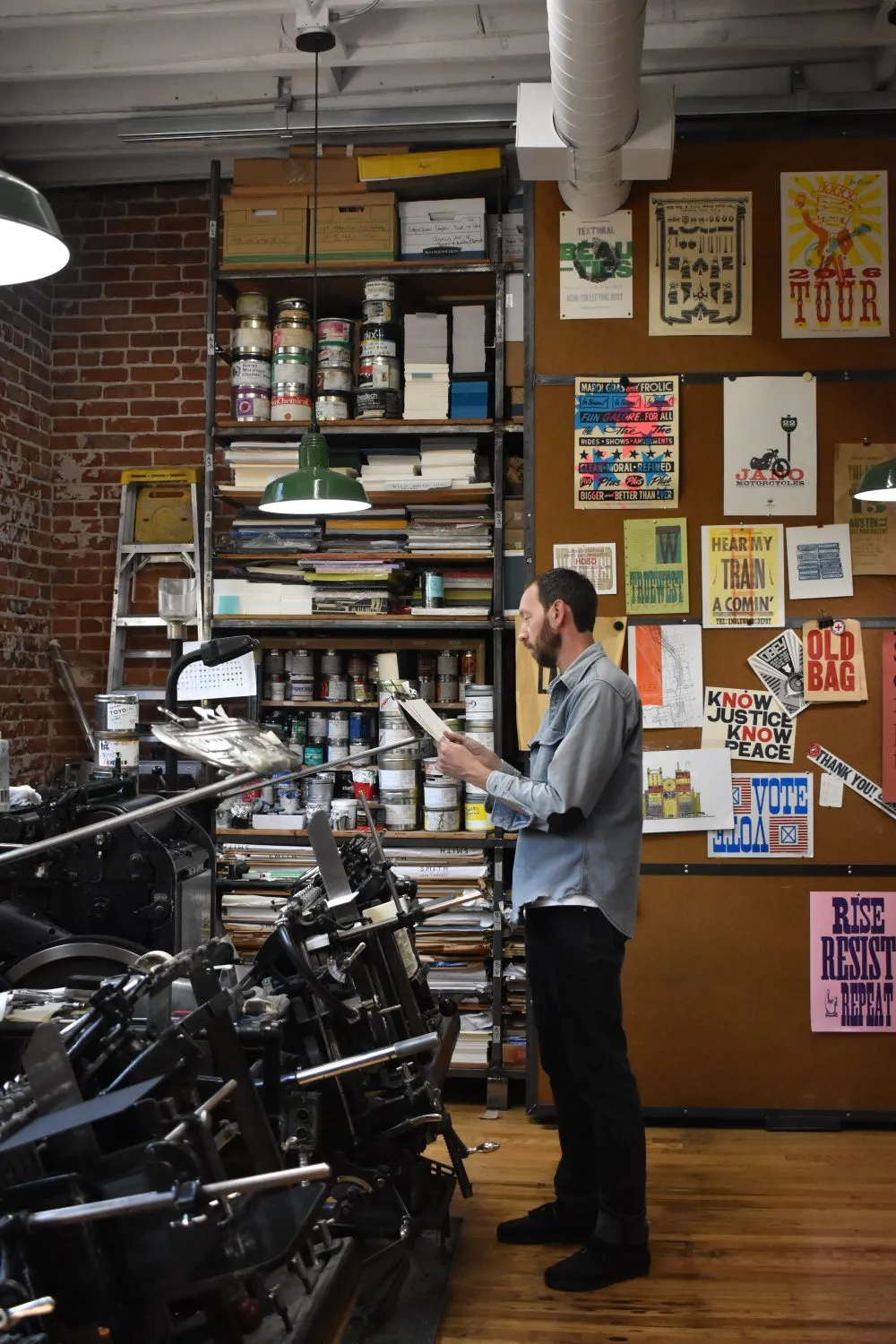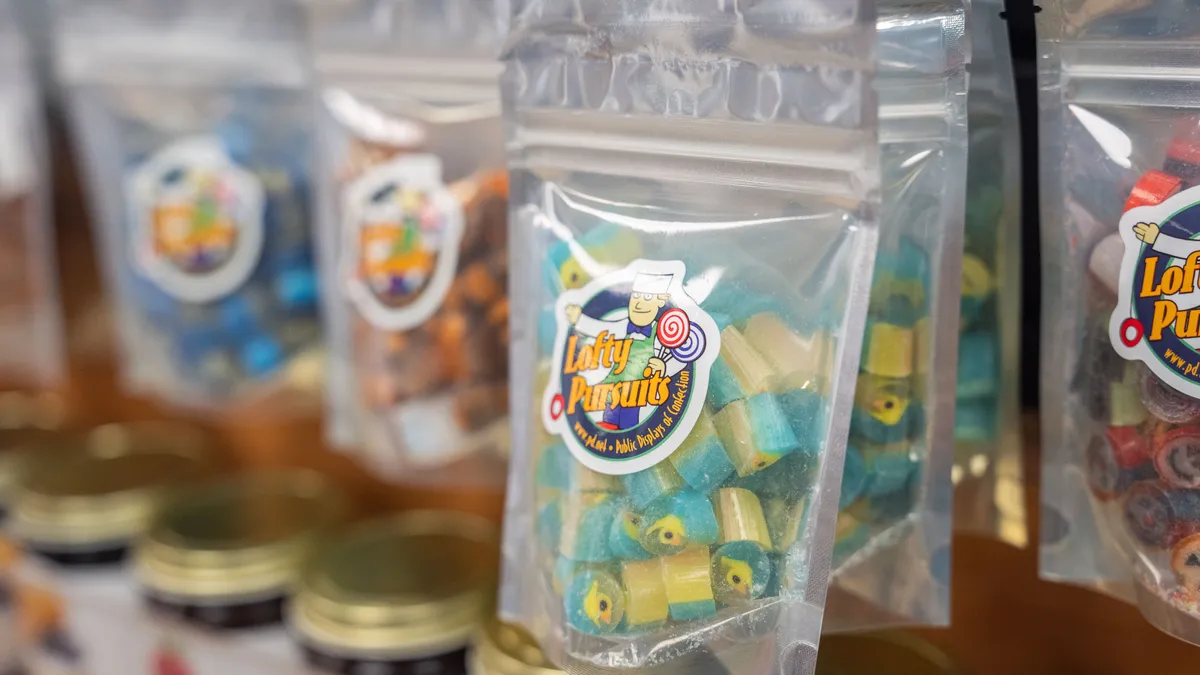
In an era where most of what we buy is mass-produced, machine-made and shipped in two days or less, artists across Denver are revitalizing old-world crafts and trades, prioritizing authentic creation. Blacksmithing, letterpress, and taxidermy may sound like trades frozen in time, but these crafts are sparking new interest.
These makers aren’t simply clinging to nostalgia — they’re adapting age-old techniques with modern tools, creating work that feels both timeless and contemporary. Together, they’re proving that even in a digital-first world, there’s still a hunger for the slow, the handmade, and the beautifully imperfect.
These artists show that traditional trades aren’t just surviving — they’re thriving, evolving and drawing new communities into the fold. In Denver, the hammer, the press, the needle and the chisel remind us that even in an on-demand world, there’s power in slowing down to make something by hand.
Here are five artists giving old trades new life.
Letterpress: Genghis Kern Design & Letterpress
2626 West 32nd Avenue
Vintage printing meets modern design at Genghis Kern. Owner and master printer Jason Wedekind started in graphic design, but fell in love with the tactile ingenuity of letterpress after acquiring a 1920s-era machine.
Wedekind and his team create everything from elaborate business cards to food packaging made of potato paper, combining thoughtful contemporary aesthetics with old-school precision. “Everything we do is rooted in craftsmanship,” he says. “We’re making our products for other artisans.”
In a digital world where everything is easier to create, Wedekind and his team believe that creating things by hand is crucial to preserving quality craftsmanship.
“Everything we create has a story,” he adds. “I always say, ‘Just because you can press print doesn’t mean you should.’ We know what we make is worth printing.”
Taxidermy: The Terrioum Shop
4416 Yates Street
At The Terrorium Shop in Denver, co-owners Ian Johnson and Amber Hage-Ali approach taxidermy as both craft and conservation. The process is painstaking — skinning, salting, tanning and carefully arranging hides over forms to bring animals back to lifelike presence. Nothing goes to waste: even skeletons are cleaned by colonies of flesh-eating beetles kept in-house.
For Hage-Ali, taxidermy isn’t just a craft, it’s a way of honoring and preserving the natural world.
“During my lifetime, nature has been used and abused for short-term profit, and our natural world is cracking under the strain,” Hage-Ali says. “Taxidermy has been a way for me to celebrate the natural world and preserve some small piece of it for others to enjoy as well.”
The Terrorium shop holds classes where you can learn taxidermy and other natural science preservation.
Leather Work: Dichotomie studio
At Dichotomie studio, age-old leather craft meets modern design. Owner Megan Combs uses vegetable-tanned leather, water-based dyes and beeswax from her father’s hives to ensure each piece is responsibly made. Her products — ranging from accessories to wall art — carry a tangible sense of process and care.
“There’s something about handmade leather goods that you can just feel. You can sense the process and care,” Combs said, “You know these handmade pieces were made to last, not meant to be worn and thrown away.”
While her practice is focused on modern style, Comb’s values the history of leatherwork.
“Tradition isn’t a constraint but rather a solid foundation to build from, allowing each piece to carry the integrity of the craft while still speaking to a contemporary audience,” Combs said, “I can’t think of something more valuable than creating with your hands.”
Wood Carving: Alexander Grabovetskiy
For master woodcarver Alexander Grabovetskiy, carving isn’t just a skill — it’s a way of life. Grabovetskiy began carving at age six, when he “borrowed” a chisel from his grandfather and etched a face into a brick. Instead of scolding him, his grandfather introduced him to the trade — continuing a family legacy of woodworking that once supplied furniture to the Russian Imperial family.
Today, Grabovetskiy works for clients worldwide, creating pieces that range from Venetian-style interiors carved entirely with hand tools to modern commissions that blend 3D modeling, CNC technology and traditional finishing.
“I like to say I paint with light and shadows — that’s my real medium in woodcarving,” Grabovetskiy explains.
What makes his work stand out, he says, is the soul left by the maker’s hand: “Tool marks carry the rhythm of the person who made it. The wood fights back a little, you answer it, and that dialogue shows up in the surface,” he says. “No machine can fake that conversation.”
Blacksmithing: Hardy & Fuller
900 West 1st Avenue, #190
At Hardy & Fuller, owner Ashe Thorne is reimagining what blacksmithing can look like in the 21st century. The Denver-based collaborative metalworking space is woman- and queer-owned — rare in a trade that has long been dominated by men — and has already introduced blacksmithing and welding to a growing community of women, BIPOC and LGBTQ makers.
Thorne’s own work blurs the line between function and art: kitchen tongs shaped with the elegance of vines, tools that feel as good to hold as they are to use, and sculptural pieces that give steel a surprising softness. “I make functional objects, but I want them to bring joy,” Thorne said. “Even the most ordinary tool can be beautiful.”
For Thorne, it is important to preserve metal crafts while reshaping them for today’s communities. “Preserving crafts is preserving knowledge,” Thorne said, “Traditional crafts have always been part of civilization and society, practicing them is a way of staying in touch with being human.”



